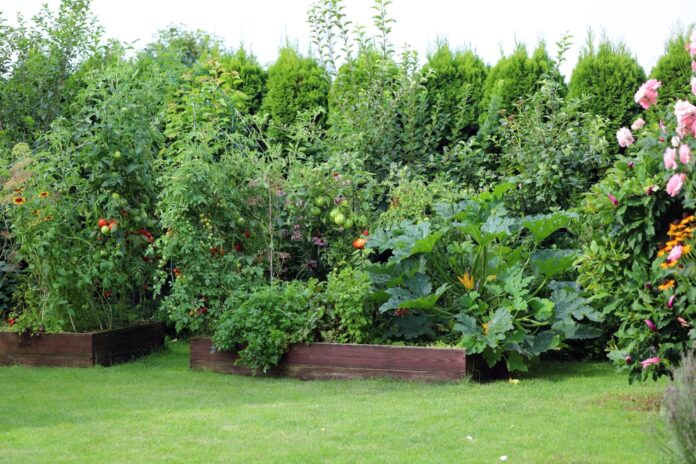Growing your own vegetables is a rewarding experience that brings fresh, flavorful produce straight from your backyard to your table. Whether you’re a seasoned gardener or just starting out, choosing the right vegetables can make all the difference in your gardening success. Let’s explore some of the best vegetables to cultivate in your backyard garden, along with tips to help them thrive.
1. Leafy Greens: Lettuce, Kale, and Spinach
Leafy greens are among the easiest vegetables to grow and are perfect for gardeners of all levels. They are versatile, grow quickly, and can be harvested multiple times throughout the season.
Lettuce varieties like butterhead and romaine are ideal for salads and sandwiches. They prefer well-drained soil rich in organic matter. You can sow seeds directly into the soil or start with seedlings. During hot summers, providing some shade helps prevent bolting.
Kale and spinach are nutrient-dense and can be grown almost year-round in many climates. They thrive in slightly acidic soil with plenty of compost and regular watering.
2. Root Vegetables: Radishes, Turnips, and Carrots
For those seeking quick and satisfying results, root vegetables are an excellent choice. Radishes and turnips grow rapidly and are ready to harvest in just a few weeks.
Radishes are perfect for filling gaps in the garden and can be sown every couple of weeks for a continuous harvest. Turnips offer both edible roots and greens, adding variety to your meals.
Carrots require loose, sandy soil to develop straight roots. They are best planted from seeds sown directly into the garden. Thin them out to give each carrot room to grow.
3. Cucumbers
Cucumbers are a warm-weather crop that thrives in the heat of summer. They need plenty of sunshine and well-drained soil. By providing support with a trellis, you can save space and improve air circulation, which helps prevent disease. Choose between slicing cucumbers for fresh eating or pickling varieties for homemade pickles.
4. Tomatoes
Tomatoes are a staple in many gardens and for good reason. They can be grown in containers or traditional garden beds and come in countless varieties, from tiny cherry tomatoes to hefty slicers.
These heat-loving plants benefit from planting cages or stakes to support their growth. Regular watering and feeding with a balanced fertilizer promote healthy plants loaded with fruit.
5. Peas
Peas are a delightful cool-season crop that can be enjoyed in the garden and the kitchen. There are three main types: shelling peas, snow peas, and snap peas.
They are easy-to-grow and prefer cooler temperatures with well-drained soil. Providing a trellis or support helps the vines climb and makes harvesting easier.
6. Zucchini and Squash
Zucchini is notorious for its prolific production. Plant seeds after the last frost, and you’ll be rewarded with an abundance of fruit throughout the summer.
Harvest zucchini when they are young and tender for the best flavor. Both zucchini and other squash varieties need plenty of space to spread, so plan accordingly.
7. Garlic
Garlic is a low-maintenance crop that can elevate your cooking. It is best planted in the fall, allowing it to establish roots before winter.
Garlic requires chilly temperatures for proper clove development. Plant individual cloves in well-drained soil, and by the next summer, you’ll have full bulbs ready to harvest.
8. Strawberries
Strawberries are a sweet addition to any garden. They can be grown in the ground, raised beds, or even hanging baskets.
These perennials spread via runners, allowing your strawberry patch to expand each year. Everbearing varieties offer fruit throughout the season, providing continuous enjoyment.
9. Bell Peppers
Bell peppers add color and crunch to salads, stir-fries, and more. They start green and can mature into red, orange, yellow, or even purple, becoming sweeter as they ripen.
Peppers prefer warm soil and air temperatures, so wait until after the last frost to plant them. They benefit from staking and regular feeding.
10. Broccoli
Broccoli is a cool-season vegetable that is both nutritious and versatile. It requires rich soil with plenty of organic matter.
Plant broccoli in late summer or early fall for a fall harvest. Ensuring the soil has the right pH level helps prevent diseases like clubroot.
Tips for a Successful Garden
- Soil Preparation: Healthy soil is the foundation of a productive garden. Use organic matter like compost and manure to enrich your soil and maintain a slightly acidic pH of 6.0-6.8.
- Containers and Space: If space is limited, many vegetables can be grown in containers or vertical gardens. Ensure your containers have adequate drainage to avoid waterlogging.
- Sunlight: Most vegetables require full sun to thrive, but some can tolerate partial shade. Assess your garden’s sunlight before planting.
- Watering and Feeding: Consistent watering and feeding are crucial. Use a balanced fertilizer and mulch to conserve moisture.
- Pest Control: Keep an eye out for pests like snails and slugs. Natural remedies, such as coffee grounds or beer traps, can help protect your plants.
Where to Buy Seeds and Supplies
- Thompson & Morgan: Offers a wide variety of seeds and gardening supplies.
- GardenTech: Provides products for plant health and pest control.
- Local Nurseries: Visit your local garden center for personalized advice and region-specific plants.
Conclusion
Embarking on the journey of growing your own vegetables is both fulfilling and beneficial. By selecting easy-to-grow varieties and following these tips, you’ll enjoy a bountiful harvest. Happy gardening!


